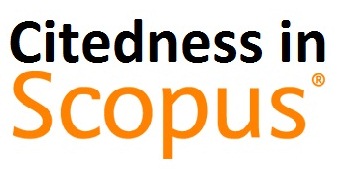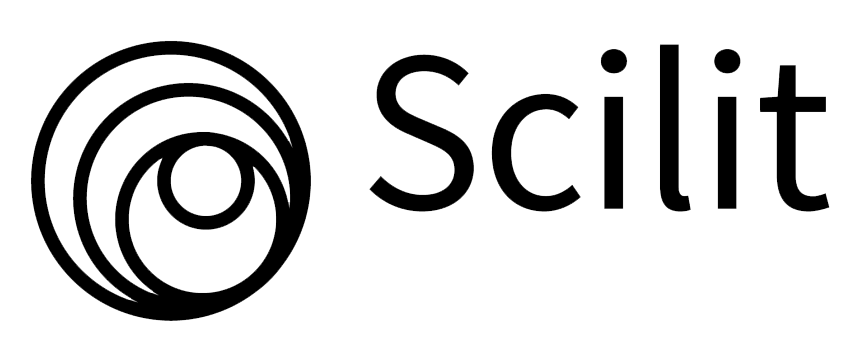Hydrogen Supply Chain Network Optimization for Supporting Urban Hydrogen Vehicle Infrastructure Development
DOI:
https://doi.org/10.38043/tiers.v6i1.6453Keywords:
Gravity Model, Hydrogen Refueling Station, Hydrogen Supply Chain, Mixed-Integer Linear Programming, Urban Energy TransitionAbstract
This study addressed the rising concerns regarding greenhouse gas emissions and the depletion of fossil fuel resources by exploring hydrogen as a clean energy alternative. The Indonesian government established a national roadmap that prioritized the transportation sector as a starting point for hydrogen deployment. The objective of this research was to design and optimize a hydrogen supply chain network in Jakarta, a densely populated urban area considered strategic for early adoption. The study applied a two-stage approach. First, potential locations for Hydrogen Refueling Stations (HRS) were pre-selected based on spatial and demographic scoring using a modified gravity model. Then the second, the optimal placement of HRS and hydrogen suppliers was determined through a Mixed-Integer Linear Programming (MILP) method. The entire modeling and optimization process was implemented in Python, with MILP solved using the Gurobi optimizer. A total of 216 existing gas stations were assessed and grouped into five priority levels. The optimization was conducted for three planning periods: 2026-2030, 2031-2035, and 2036-2040. The results showed that integrating new HRS into existing infrastructure reduced land use and investment costs. Sensitivity analysis indicated that daily HRS capacity, hydrogen demand, and capital cost were the most influential factors. The study concluded that this integrated approach provides an efficient, flexible, and sustainable foundation for future hydrogen infrastructure development in urban regions.
Downloads
References
M. Reza. Rahimpour, Mohammad. Faris, and M. Amin. Makarem, Advances in carbon capture: methods, technologies and applications. Woodhead Publishing, 2020.
L. Li, H. Manier, and M. A. Manier, “Integrated optimization model for hydrogen supply chain network design and hydrogen fueling station planning,” Comput Chem Eng, vol. 134, Mar. 2020, doi: 10.1016/j.compchemeng.2019.106683.
S. Chakraborty et al., “Hydrogen Energy as Future of Sustainable Mobility,” May 31, 2022, Frontiers Media S.A. doi: 10.3389/fenrg.2022.893475.
S. Bae, E. Lee, and J. Han, “Multi-period planning of hydrogen supply network for refuelling hydrogen fuel cell vehicles in Urban areas,” Sustainability (Switzerland), vol. 12, no. 10, May 2020, doi: 10.3390/su12104114.
Indonesia Fuel Cell and Hydrogen Energy (IFHE) and Badan Riset dan Inovasi Nasional (BRIN), “Indonesia Hidrogen Roadmap,” 2023. Accessed: Jun. 13, 2025. [Online]. Available: https://ifhe.or.id/wp-content/uploads/2023/06/indonesia%20hidrogen%20roadmap.pdf
Kementerian PPN/Bappenas, “Energi,” Lembaga Carbon Development Indonesia (LCDI). Accessed: Jun. 13, 2025. [Online]. Available: https://lcdi-indonesia.id/grk-energi/
C. Cunanan, M. K. Tran, Y. Lee, S. Kwok, V. Leung, and M. Fowler, “A Review of Heavy-Duty Vehicle Powertrain Technologies: Diesel Engine Vehicles, Battery Electric Vehicles, and Hydrogen Fuel Cell Electric Vehicles,” Jun. 01, 2021, MDPI. doi: 10.3390/cleantechnol3020028.
F. Qureshi et al., “A State-of-The-Art Review on the Latest trends in Hydrogen production, storage, and transportation techniques,” Fuel, vol. 340, May 2023, doi: 10.1016/j.fuel.2023.127574.
Z. M. Shoja, M. A. Mirzaei, H. Seyedi, and K. Zare, “Sustainable energy supply of electric vehicle charging parks and hydrogen refueling stations integrated in local energy systems under a risk-averse optimization strategy,” J Energy Storage, vol. 55, Nov. 2022, doi: 10.1016/j.est.2022.105633.
H. Kim, M. Eom, and B. I. Kim, “Development of strategic hydrogen refueling station deployment plan for Korea,” Int J Hydrogen Energy, vol. 45, no. 38, pp. 19900–19911, Jul. 2020, doi: 10.1016/j.ijhydene.2020.04.246.
C. Zhang et al., “Research and development of on-site small skid-mounted natural gas to hydrogen generator in China,” Int J Hydrogen Energy, vol. 48, no. 49, pp. 18601–18611, Jun. 2023, doi: 10.1016/j.ijhydene.2023.02.006.
X. Zhang, Y. Yin, Y. Lv, H. Wang, T. Wu, and G. Wang, “A Low-Carbon Planning Strategy for Integrated Energy System and Hydrogen Refueling Stations with the Retirement of Oil Stations,” IEEE Trans Ind Appl, 2024, doi: 10.1109/TIA.2024.3446956.
R. Raeesi, C. Searle, N. Balta-Ozkan, L. Marsiliani, M. Tian, and P. Greening, “Hydrogen supply chain and refuelling network design: assessment of alternative scenarios for the long-haul road freight in the UK,” Int J Hydrogen Energy, vol. 52, pp. 667–687, Jan. 2024, doi: 10.1016/j.ijhydene.2023.03.474.
Y. Ibrahim and D. M. Al-Mohannadi, “Optimization of low-carbon hydrogen supply chain networks in industrial clusters,” Int J Hydrogen Energy, vol. 48, no. 36, pp. 13325–13342, Apr. 2023, doi: 10.1016/j.ijhydene.2022.12.090.
D. Thiel, “A pricing-based location model for deploying a hydrogen fueling station network,” Int J Hydrogen Energy, vol. 45, no. 46, pp. 24174–24189, Sep. 2020, doi: 10.1016/j.ijhydene.2020.06.178.
T. Crönert and S. Minner, “Location selection for hydrogen fuel stations under emerging provider competition,” Transp Res Part C Emerg Technol, vol. 133, Dec. 2021, doi: 10.1016/j.trc.2021.103426.
S. B. Gündüz, E. Geçici, and M. G. Güler, “Locating hydrogen fuel stations: A comparative study for Istanbul,” Int J Hydrogen Energy, vol. 52, pp. 1234–1246, Jan. 2024, doi: 10.1016/j.ijhydene.2023.10.295.
T. Zhao, Z. Liu, and T. Jamasb, “Developing hydrogen refueling stations: An evolutionary game approach and the case of China,” Energy Econ, vol. 115, Nov. 2022, doi: 10.1016/j.eneco.2022.106390.
L. Wu, Z. Zhu, Y. Feng, and W. Tan, “Economic analysis of hydrogen refueling station considering different operation modes,” Int J Hydrogen Energy, vol. 52, pp. 1577–1591, Jan. 2024, doi: 10.1016/j.ijhydene.2023.09.164.
M. Fazli-Khalaf, B. Naderi, M. Mohammadi, and M. S. Pishvaee, “Design of a sustainable and reliable hydrogen supply chain network under mixed uncertainties: A case study,” Int J Hydrogen Energy, vol. 45, no. 59, pp. 34503–34531, Dec. 2020, doi: 10.1016/j.ijhydene.2020.05.276.
S. K. Seo, D. Y. Yun, and C. J. Lee, “Design and optimization of a hydrogen supply chain using a centralized storage model,” Appl Energy, vol. 262, Mar. 2020, doi: 10.1016/j.apenergy.2019.114452.
M. Li, P. Ming, R. Huo, H. Mu, and C. Zhang, “Optimizing design and performance assessment of a sustainability hydrogen supply chain network: A multi-period model for China,” Sustain Cities Soc, vol. 92, May 2023, doi: 10.1016/j.scs.2023.104444.
H. G. Santos and T. A. M. Toffolo, “Mixed Integer Linear Programming with Python,” 2020.
F. Simini, G. Barlacchi, M. Luca, and L. Pappalardo, “A Deep Gravity model for mobility flows generation,” Nat Commun, vol. 12, no. 1, Dec. 2021, doi: 10.1038/s41467-021-26752-4.
N. H. Hanifha, A. Y. Ridwan, and P. S. Muttaqin, “Site Selection of New Facility Using Gravity Model and Mixed Integer Linear Programming in Delivery and Logistic Company,” in ACM International Conference Proceeding Series, Association for Computing Machinery, Jun. 2020, pp. 43–47. doi: 10.1145/3400934.3400944.
E. Maria, E. Budiman, Haviluddin, and M. Taruk, “Measure distance locating nearest public facilities using Haversine and Euclidean Methods,” in Journal of Physics: Conference Series, Institute of Physics Publishing, Mar. 2020. doi: 10.1088/1742-6596/1450/1/012080.
A. Likas, N. Vlassis, and J. J. Verbeek, “The global k-means clustering algorithm,” 2003. [Online]. Available: www.elsevier.com/locate/patcog
T. M. Kodinariya and P. R. Makwana, “Review on determining number of Cluster in K-Means Clustering,” International Journal of Advance Research in Computer Science and Management Studies, vol. 1, no. 6, 2013, [Online]. Available: www.ijarcsms.com
D. Tenfen and E. C. Finardi, “A mixed integer linear programming model for the energy management problem of microgrids,” Electric Power Systems Research, vol. 122, pp. 19–28, 2015, doi: 10.1016/j.epsr.2014.12.019.
L. Moretti, M. Milani, G. G. Lozza, and G. Manzolini, “A detailed MILP formulation for the optimal design of advanced biofuel supply chains,” Renew Energy, vol. 171, pp. 159–175, Jun. 2021, doi: 10.1016/j.renene.2021.02.043.
A. Saltelli, S. Lo, and A. Puy, “Sensitivity Auditing,” 2023. Accessed: Jun. 13, 2025. [Online]. Available: https://ssrn.com/abstract=3977104
E. Borgonovo and E. Plischke, “Sensitivity analysis: A review of recent advances,” Feb. 01, 2016, Elsevier B.V. doi: 10.1016/j.ejor.2015.06.032.
K. G. Link et al., “A local and global sensitivity analysis of a mathematical model of coagulation and platelet deposition under flow,” PLoS One, vol. 13, no. 7, Jul. 2018, doi: 10.1371/journal.pone.0200917.
E. Borgonovo and G. Rabitti, “Screening: From tornado diagrams to effective dimensions,” Eur J Oper Res, vol. 304, no. 3, pp. 1200–1211, Feb. 2023, doi: 10.1016/j.ejor.2022.05.003.
M. Genovese, V. Cigolotti, E. Jannelli, and P. Fragiacomo, “Current standards and configurations for the permitting and operation of hydrogen refueling stations,” Jun. 16, 2023, Elsevier Ltd. doi: 10.1016/j.ijhydene.2023.01.324.
C. Park, S. Lim, J. Shin, and C. Y. Lee, “How much hydrogen should be supplied in the transportation market? Focusing on hydrogen fuel cell vehicle demand in South Korea: Hydrogen demand and fuel cell vehicles in South Korea,” Technol Forecast Soc Change, vol. 181, Aug. 2022, doi: 10.1016/j.techfore.2022.121750.
Y. Chu, Z. Wu, and Y. Yin, “Development of a solar-assisted hydrogen-from-power refueling station: A financial incentive model under the Well-to-Wheel and life cycle cost analyses,” Int J Hydrogen Energy, vol. 103, pp. 288–299, Feb. 2025, doi: 10.1016/j.ijhydene.2025.01.178.
M. Zhu, P. Dong, Y. Ju, J. Li, and L. Ran, “Effects of government subsidies on heavy-duty hydrogen fuel cell truck penetration: A scenario-based system dynamics model,” Energy Policy, vol. 183, Dec. 2023, doi: 10.1016/j.enpol.2023.113809.
Downloads
Published
How to Cite
Issue
Section
License
Copyright (c) 2025 Rahmad Anasrul, Bertha Maya Sopha

This work is licensed under a Creative Commons Attribution-ShareAlike 4.0 International License.





















